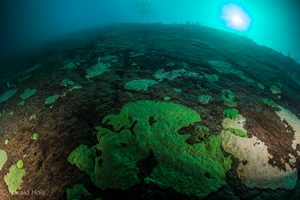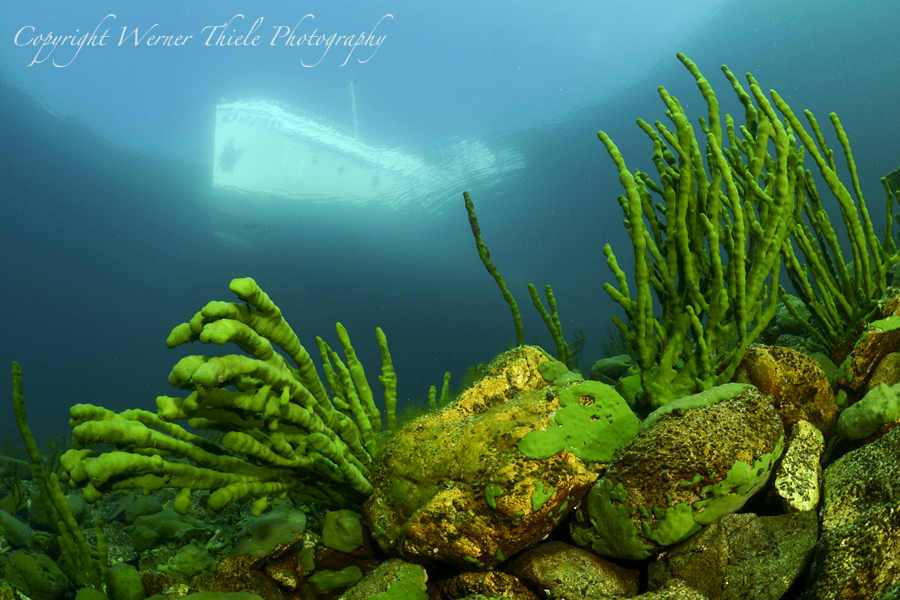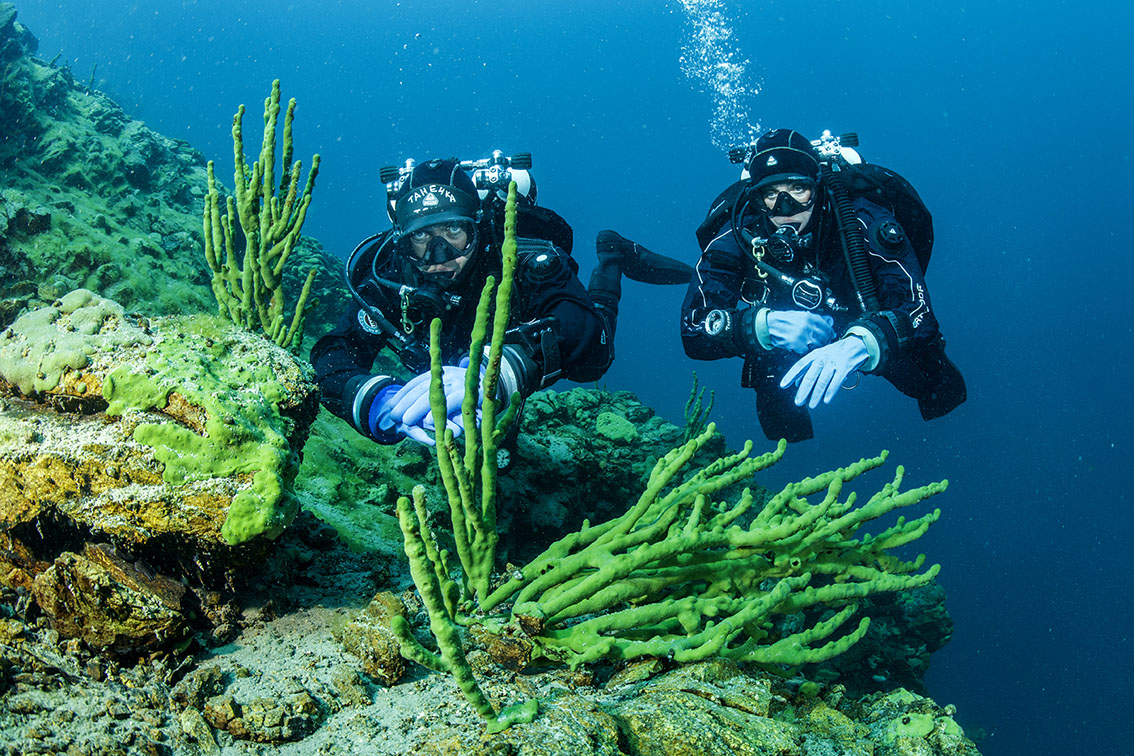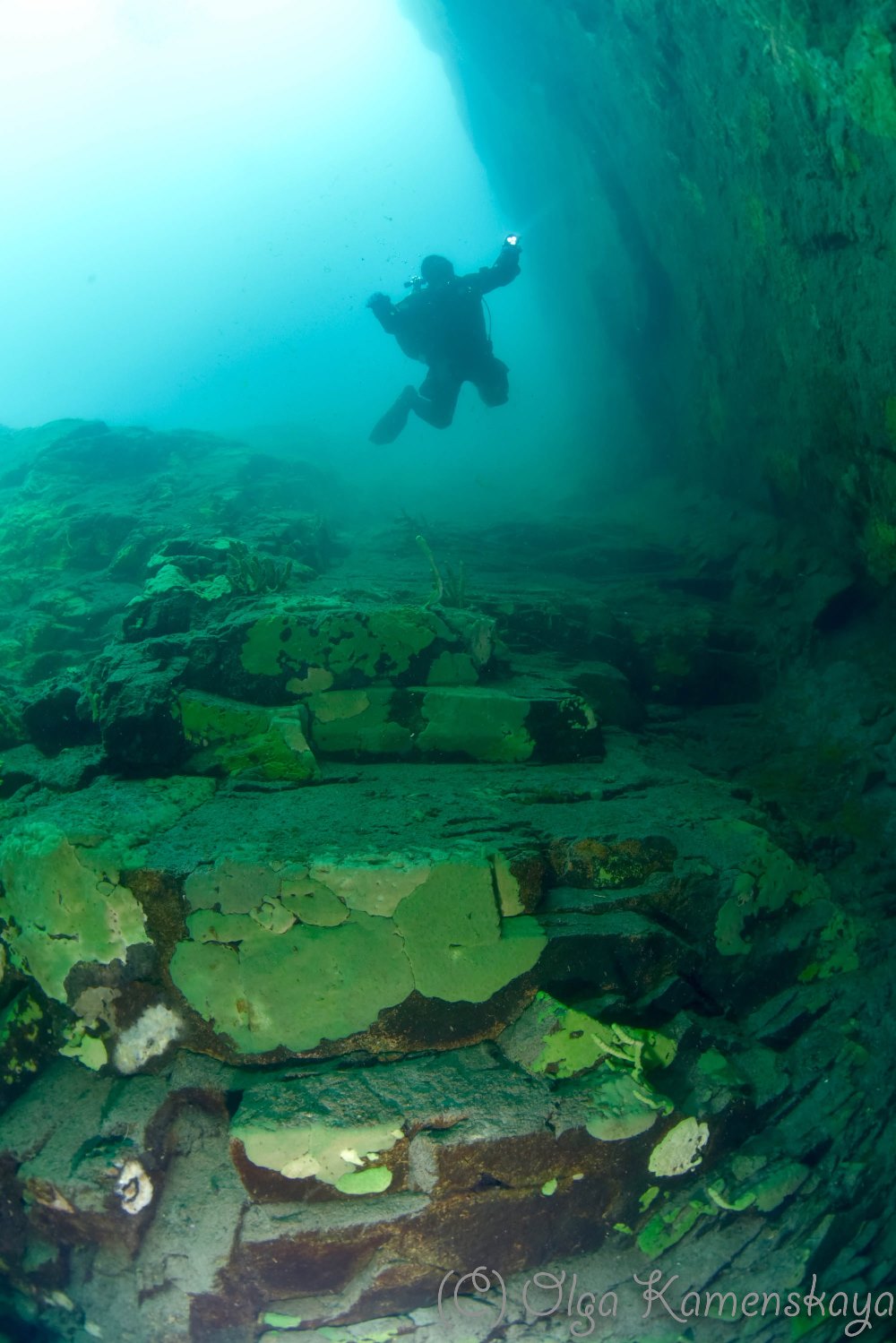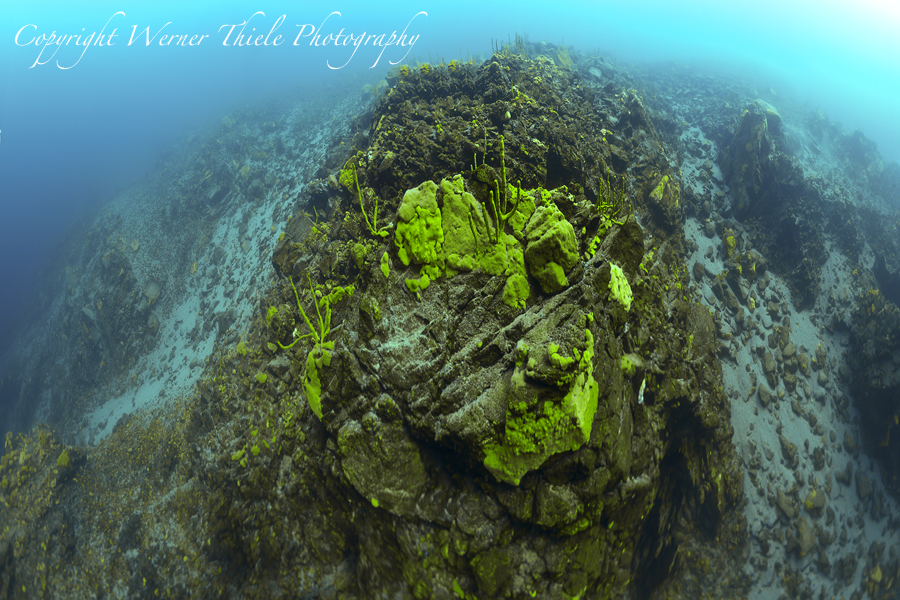
The dive site owes its name to the peculiar sandy talus on the mountain slope opposite the site. The site is interesting for recreational and technical dives up to 80 meters.
Recommended depths: 10-20 meters for photographing and filming, 10-40 meters for recreational dives, and up to 80 meters for technical dives.
You find a stone drop-off here, and in the northern and southern parts of the site, steep sandy slopes with big stones and mountain rock outcrops.
 The dive site name came to our mind because we often saw really many rainbows in the area. Do you agree this sounds better than «to the north from Northern Kedroviy/Cedar»?
The dive site name came to our mind because we often saw really many rainbows in the area. Do you agree this sounds better than «to the north from Northern Kedroviy/Cedar»?
 A dive boat is anchored in a small offshore area (depth - 6-10 meters) to the north from Cape Northern Kedroviy. A steep benchy stone drop off covered in very high sponges. To the left and to the right from the drop off - sand inclinations. To the north - a sand inclination with huge stones covered in sponges. A picturesque offshore area of white sand and huge stones, covered in sponges.
A dive boat is anchored in a small offshore area (depth - 6-10 meters) to the north from Cape Northern Kedroviy. A steep benchy stone drop off covered in very high sponges. To the left and to the right from the drop off - sand inclinations. To the north - a sand inclination with huge stones covered in sponges. A picturesque offshore area of white sand and huge stones, covered in sponges.

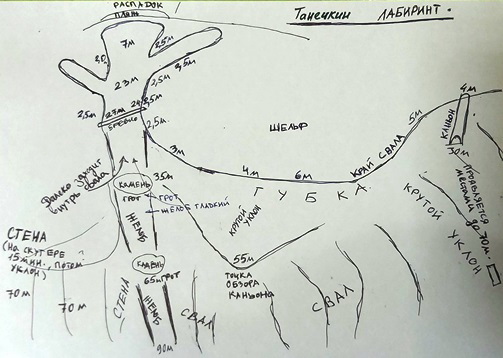
 Recommended depths: three to 60 meters for photographing and filming, 6-40 meters for recreational dives and up to 130 meters for deep and trimix dives. An ideal place for deep diving. There were made dives to the depth of 130 meters (Tatiana Oparina, 2012)
Recommended depths: three to 60 meters for photographing and filming, 6-40 meters for recreational dives and up to 130 meters for deep and trimix dives. An ideal place for deep diving. There were made dives to the depth of 130 meters (Tatiana Oparina, 2012)
